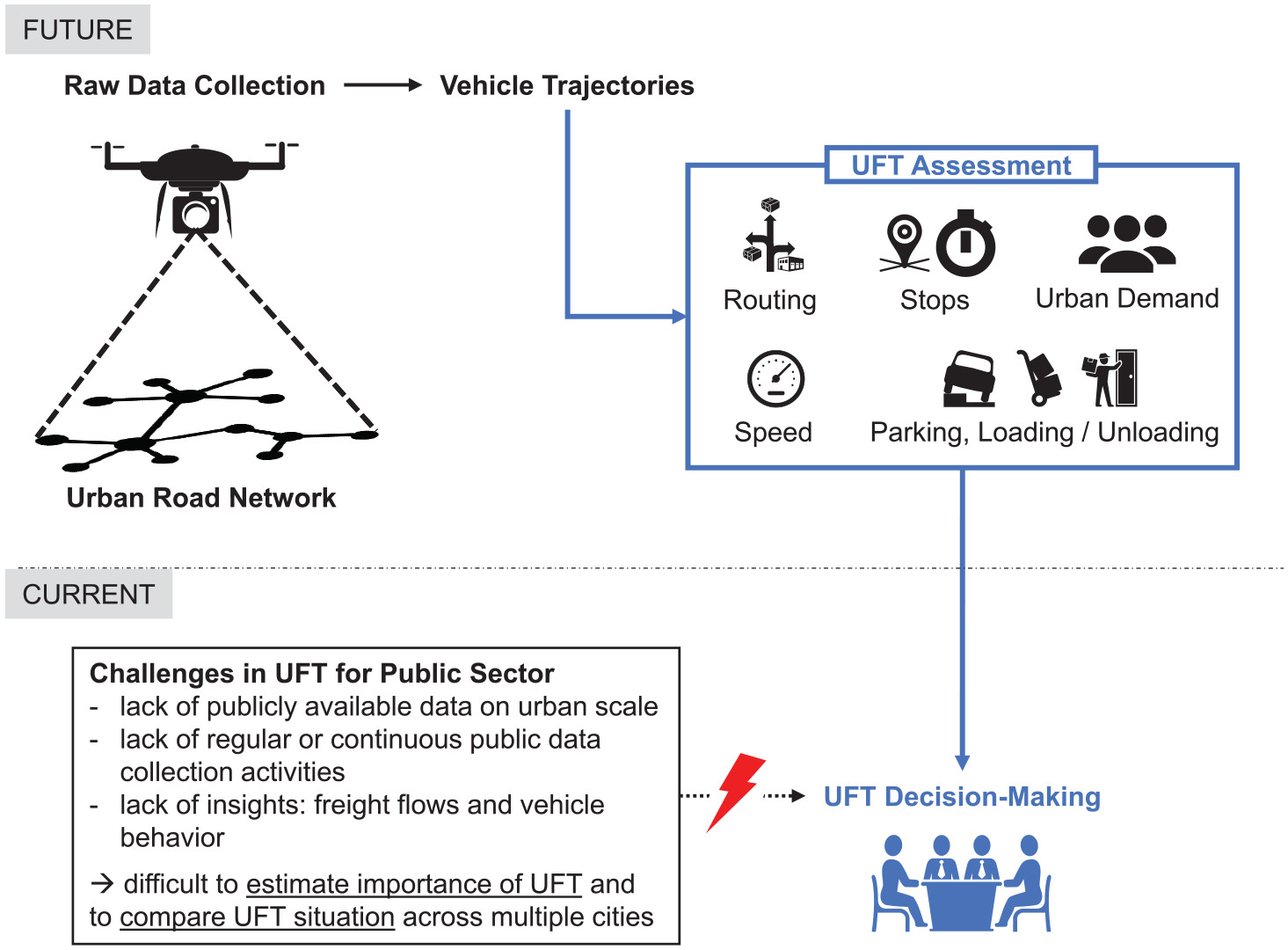A paper by Allister Loder, Thomas Otte and Klaus Bogenberger was published inTransportation Research Record entitled “Using Large-Scale Drone Data to Monitor and Assess the Behavior of Freight Vehicles on Urban Level”. The authors utilise the pNEUMA dataset to monitor and assess the behaviour of freight vehicles, focusing on the way their stopping behaviour affects traffic flow.
Highlights
- Urban freight vehicles’ stopping frequency lies between the stopping frequencies of cars and buses
- Clustering all loading and unloading stops further reveals three groups of loading and unloading stops
- The revealed vehicle behavior parameters can be used in traffic models to generate further insights
Abstract
Compared with public transport operations, urban freight traffic and its associated delivery operations seem to be frequently overlooked in urban traffic management and traffic flow theory. One explanation for this is certainly the lack of available data, as the competitive freight transport market is fragmented and several actors are unwilling to collect or share tactical and operational data. In this study, we use the unique pNEUMA drone data set from Athens, Greece, to shed light on urban freight operations. We discuss macroscopic traffic indicators in a multimodal context. As the vehicle stopping behavior can adversely influence traffic flow, we reveal the stopping behavior of the different modes represented in the data set using clustering techniques. We find that urban freight vehicles’ stopping frequency lies between the stopping frequencies of cars and buses. We reveal the distribution of stopping times for loading and unloading stops in Athens to have a mean of around 380 seconds. Clustering all loading and unloading stops further reveals three groups of loading and unloading stops that could be labeled by incorporating knowledge and expertise about local particularities. The limited flight time of drones, owing to their battery capacities, did not allow reconstruction of longer vehicle routes, such as an entire vehicle tour within the network. However, this could be addressed in future research by realizing continuous large-scale monitoring routines. The revealed vehicle behavior parameters can be used in traffic models to generate further insights into the impacts of urban freight transport to inform public sector decision makers.
You can read the paper here.
